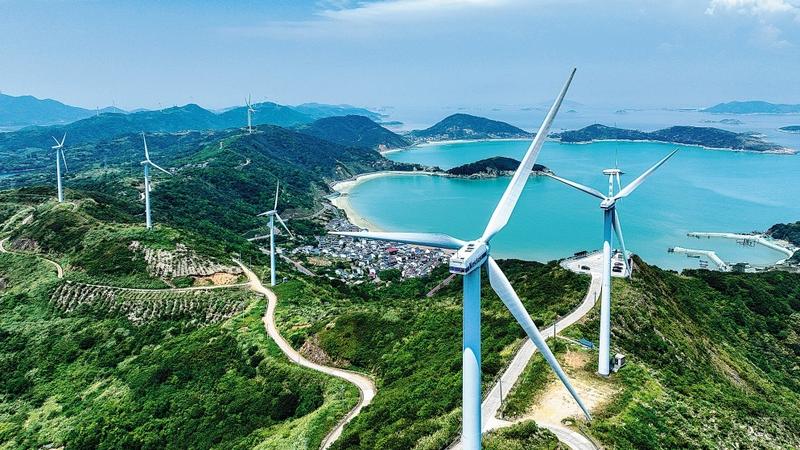 This undated photo shows a wind farm generating power for grids in Zhoushan, Zhejiang province of China. (YAO FENG / FOR CHINA DAILY)
This undated photo shows a wind farm generating power for grids in Zhoushan, Zhejiang province of China. (YAO FENG / FOR CHINA DAILY)
In recent years, China has accelerated the development of new energy as a way of tackling climate change and other environmental challenges.
As a result, the county has been steadily moving toward a clean, low-carbon energy system. Last year, clean energy sources provided 25.9 percent of the total energy consumed in the country — 8.9 percentage points higher than in 2012 — while the use of coal fell from 68.5 percent to 56.2 percent over the same period.
Meanwhile, the installed capacity of renewable energy reached 1.3 billion kilowatts in June, surpassing coal for the first time. In addition, China's total installed capacities of hydro, wind, solar and biomass power generation all ranked number one in the world.
In recent years, technological progress and the large-scale application of renewable energy have greatly reduced the cost of renewables in China.
Figures released by the Ministry of Ecology and Environment show that China supplies 50 percent of wind-power equipment and 80 percent of photovoltaic module equipment to the rest of the world. In 2021, the installation cost of global PV equipment was about 80 percent of the figure in 2010, while the cost of installing wind-power equipment had fallen by at least 35 percent over the same period.
The country's new energy vehicle sector has also seen turbocharged growth in recent years, gaining a head start in the global race to electrify cars.
According to statistics released by the Ministry of Public Security, China now has about 16 million NEVs, or half the global total, and the nation's NEV production and sales have remained the global number one for eight consecutive years since 2015.
China rolled out its first NEV development plan in 2008. Policymakers at both the central and local levels have since provided solid, consistent support for the sector's development.
Anhui province is a typical example of the policy's success. It was one of the provinces where NEVs were developed, and has long leveraged policy stimulus to spur growth of the industry. As such, the province is now home to carmakers such as Chery and Nio.
Last year, China's carbon emission intensity — carbon dioxide emissions per unit of GDP — was 50.8 percent lower than in 2005 as a result of the robust development of renewable energy.
The application of new energy has also helped improve air quality. From 2013 to last year, the concentration of PM2.5, a major gauge of air pollution, was slashed by 57 percent, solving one of the most prominent environmental headaches that had long plagued China.










